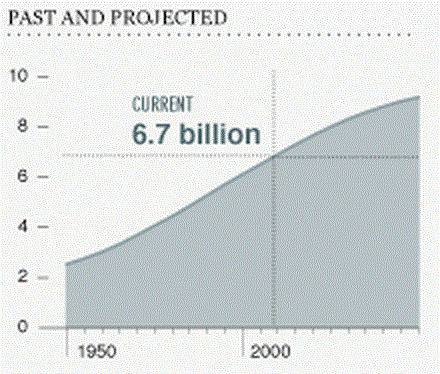Much has been made of the fact that the global population rate has ballooned over the past few decades, spawning anti-immigration political movements as if migrants are the only factor in this growth. In fact, the global population growth is largely attributed to couples having more than two babies on average. But there are signs that growth may be slowing.
In 1950 the global population was just over 2 billion. Today it stands at 6.7 billion, and it's projected to edge towards 10 billion in coming decades:
However, as you can see from that curve, the growth rate is starting to tail off. The growth spurt that caused the population explosion since 1950 was due to a population growth of up to 2%. Today, the growth rate has dropped to 1.1% and it's projected to fall still lower to less than 0.5% in the coming decades:
If we break this down by region, it seems that growth in most regions is tailing off, with growth in the developed Europe region going negative into population decline. Only Africa's growth rate continues to rise, driven by growth in sub-Saharan countries:
The '
medium variant' UN forecast predicts that population will level out at 10bn by the year 2100.
However, some forecasts go further than that and predict that birthrates will fall below 'replacement rate' in the 2020s, meaning that on average we will be having fewer than one child per person. The '
low variant' of the UN population predictions considers the possibility that population may peak at 8bn and decline to 6.7bn by 2100.




No comments:
Post a Comment